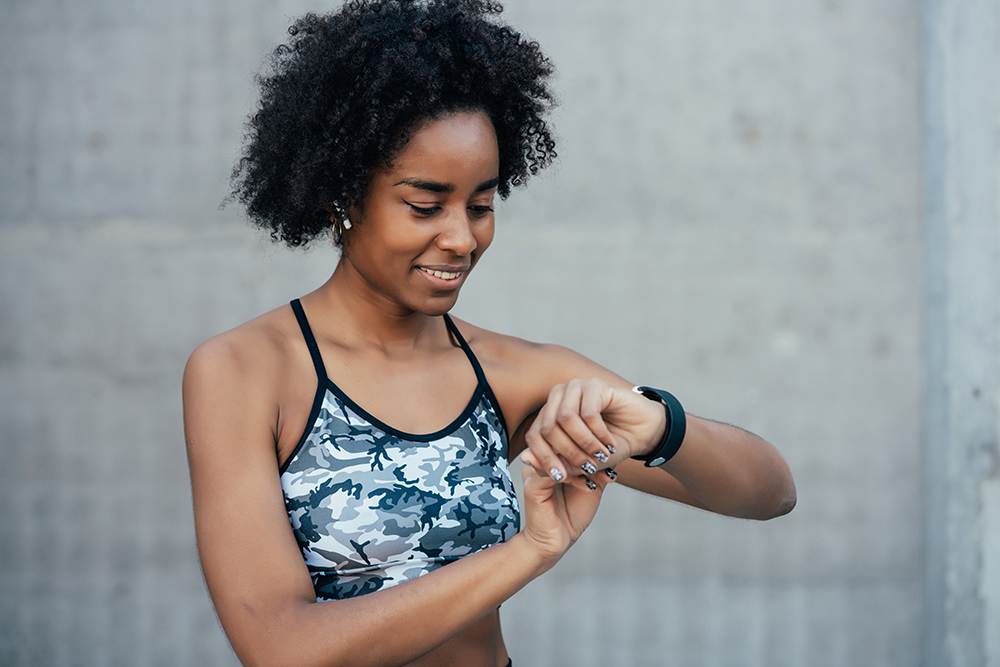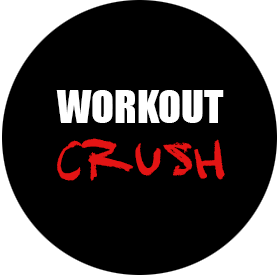
Intermittent fasting has been shown to help with weight loss, but it can be difficult to workout while intermittent fasting. If you’re trying to lose weight and are considering intermittent fasting, then this article will show you how to work out while intermittent fasting.
Working out while fasting can help you see results sooner because they have shown that fasted workouts help lose weight, prevent diabetes, increase muscle mass, and decrease inflammation. If you are not seeing the results you would like to with your normal workouts this may be an option to consider. Although it may sound unhealthy to work out while intermittent fasting, it is actually proven by science.
You don’t have to give up your workouts just because you’re doing an intermittent fast. There are plenty of ways for you to exercise during the day without breaking your fast for the day. We’ll cover some of the best exercises for people who want to do an intermittent fasting routine.
Intermittent fasting has been shown to improve several different health markers, including weight loss and insulin sensitivity. The basic premise behind intermittent fasting is that you fast for 16 hours of the day and eat all of your calories within an 8-hour window each day. Some people also narrow the window by fasting for 20 hours of the day while eating only 4 hours of the day. Whichever intermittent fast you choose to do many people don’t want to give up working out while fasting. So the questions come up, Is it okay to workout while intermittent fasting?”
Working out first thing in the morning on an empty stomach can be difficult, especially if you’re not used to fasting for extended periods of time. One of the biggest benefits of intermittent fasting is that it allows people to workout early in the day when they’re less likely to feel tired.
Fasted workouts have also been shown to decrease inflammation and oxidative stress throughout the rest of the day due to their effects on oxidative stress levels. This decreases the amount of free radicals in your body, which can be very beneficial.
Studies have shown that working out on an empty stomach can promote fat burning.. This is because fasted workouts are more likely to burn fat for fuel than glycogen or other forms of energy during workouts.
Although there have been no problems found with people doing fasted workouts, it’s important to understand the risks in order to make the best decisions for your health. It’s possible that working out too hard on an empty stomach can lead to issues. Additionally, if you’re new to fasting, then it’s important to ease into it over time rather than jumping straight into a 16/8 routine.
How To Do a 16/8 Fasted Workout
The biggest tip for doing fasted workouts is to keep them less intense. The goal is to get through the workout while at your most energized, so that you don’t get too hungry when you break your fast. You’ll want to keep your exercise time between 30 and 45 minutes.
How To Do a 20/4 Fasted Workout
On days where you only have time for a 20/4 fasted workout, it’s important to work out at a lower intensity. You’ll want to make sure that you’re taking rest breaks between exercises. You should also try to space out your workout so that you’re in a fasted state for over 4 hours.
How To Make Fasted Workouts Easier
If the thought of doing a fasted workout is stressing you out or making you feel like skipping your workout altogether, there are several strategies to make your workouts more enjoyable. Staying hydrated is one ne of the biggest issues people run into when doing fasted workouts is feeling dehydrated and fatigued during their session. Usually, this will only occur if your workout goes longer than an hour or so. The easiest way to combat this issue is to make sure you’re staying hydrated throughout the day, especially in the 24 hours leading up to your workout.
You may also want to try doing fasted workouts in spurts. You can do a 16/8 fasted workout for two weeks, then go back to your regular routine before starting it again. Switching between not eating and being able to eat is very similar to the benefits of fasting and might help you make the switch more easily.
If you’re just starting out with fasted workouts, it’s important to understand that they can actually be harder than workouts done while eating. This is because your body is used to food and its fuel sources, but not skipping meals. Additionally, it takes some time for your body to adapt to the change in fasting patterns.
1. Start small– By fasting for 16 hours, you’re essentially skipping one meal worth of food. Typically, breakfasts are the most common meals people skip in a day, and if you don’t want to start with an ultra-fasted workout, then try starting with a 12/12 fast.
2. Start slow– If it’s your first time trying a fasted workout, then start out slow. Make sure that you ease into the routine over before pushing yourself too hard.
3. Take breaks– Just because you’re fasting doesn’t mean that you aren’t allowed to rest! It’s very important to take some time during your workout to properly fuel yourself and give your body a chance to recuperate before starting another hard exercise session. This will also help with the low energy levels associated with fasted workouts.
4. Stay hydrated– Fasted workouts are very dehydrating, so it’s important to stay on top of your fluid intake. Drinking more water is also a good strategy for staying fueled when you’re working out in a fasted state.
If you’re feeling nervous about starting a fasted workout, here are some things you should know before you begin:
1. “It’s not that bad.”- This is one of the most common comments I hear from people who are afraid of trying their first fasted workout, but it really isn’t as bad as you think. Most people who’ve tried it say they didn’t even notice it.
2. You won’t be sweating as much- Most fasted workouts don’t produce much sweat, because your body has already used its supplies of glucose to help fuel you through the workout. This is why most people who do fasted workouts are more focused on the sustained energy levels instead of short bursts of high intensity that come with sugar.
3. You’ll start to notice a difference- Your body is very good at adapting to known stresses, and after you’ve done it once or twice, being fasted during your workouts will probably become easier than before.
4. Timing does matter- When doing fasted workouts in the morning, it’s important to skip breakfast and start the workout as close to waking up as possible. This way, your body has no food in it at all when you’re doing the workouts.
5. You don’t have to do it everyday- Fasted workouts can be very draining on the body, so I recommend only doing them 2 or 3 times a week max at first.
Most People Who Try Fasted Workouts Report Two Core Benefits
More energy– This is one of the biggest reasons why people start doing fasted workouts, as well as the most obvious. You just feel more energized during your workout when you have no food in your system, and it’s great for those early morning workouts.
Better nutrient partitioning– Fasted workouts are also said to improve the ability of your body to absorb nutrients from other foods, which is why it’s considered a good strategy for those trying to gain muscle or lose fat.
The best benefit of fasted workouts is that they put your body in a state of ketosis. Being in ketosis basically means you’re using fat for fuel and not relying on sugar as heavily. This has all kinds of positive side effects like: losing weight, better control of blood sugar, more energy, improved focus and concentration, better hormonal responses to workouts, improved immune system function, increased capacity to recover from workouts.
Tips for success when working out in a fasted state
1. Start with low intensity, short duration sessions- This is a big mistake that people make when starting their first fasted workout. They go out and try to run hard for an hour or two, which almost always ends in failure as you’ll see in detail below. If you’ve never done a fasted workout before, then start off with 30-45 minutes of low intensity cardio and see how you feel after. If that goes well, then gradually increase the duration or intensity as long as you’re feeling good.
2. Make sure your workouts are early in the morning- This is another big mistake people make when doing fasted workouts for the first time. They do it at an inconvenient time that isn’t close to waking up, and end up starving by the time they’re done. Most people who do fasted workouts do them either in the morning or right after they wake up from a night of sleep. Either way, you should make sure your next one is at least 4 hours away from your last meal.
3. Drink lots of water, and use a sports drink if necessary- If you’re going to be working out in a fasted state, it’s absolutely crucial that you stay hydrated. You can get away with not drinking enough water for workouts when your body has food in it, but when you’re fasting the water needs are extremely high. I recommend sipping on water during your fasted workout and making sure to drink a full glass of water afterwards. If you’re working out in the summer or live somewhere warm, then bring along an electrolyte based sports drink instead because they have more sodium and other nutrients that help with hydration.
4. Listen to your body- This is by far the most important part because it’s easy to push yourself too hard during fasted workouts. You have no energy from food, which means your body has to rely on its own fat stores for fuel. This is great in and of itself, but if you push yourself too hard then you’re actually going to start breaking down muscle as well as burning fat. This is why you see guys in the gym doing ridiculously high reps of bicep curls when they’re carb-depleted, because they can’t actually get enough fuel to do real weight training. The goal with fasted workouts isn’t to exercise until failure. It’s to keep moving while still feeling good and having energy, and then stopping before you completely run out of fuel.
The bottom line is that most people screw up their first couple fasted workouts by going too hard and not listening to their bodies, which is why it often creates a bad impression about them. If you just follow these tips then your first experience will be much better.
